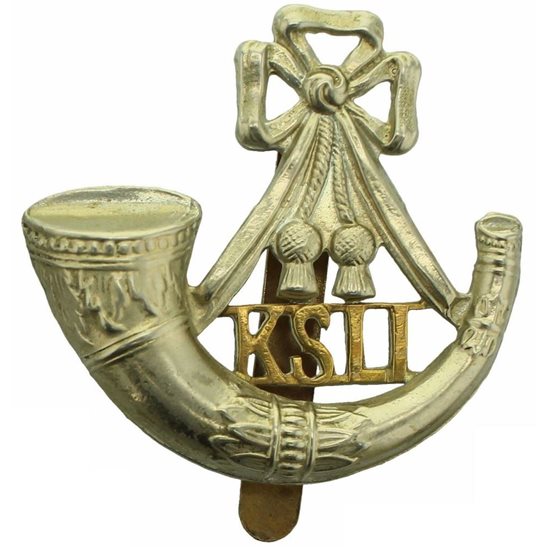Personal Details
Born: 15 March 1898.
Family: The first child of Samuel and Mary Webster of 15 Barlows Yard, Whitchurch, Shropshire.
Civilian Occupation: He was working at cable makers British Insulated Cables Ltd Norfolk prior to enlisting.
Residence: He lived at 5 Castle Hill, Whitchurch, Shropshire after discharge from the army.
Military Details
Regiment: King’s Shropshire Light Infantry
Rank: Private
Service Number: 17747
Date of Enlistment: 21 April 1915
Date of Discharge: 2 August 1917
Reason for Discharge: Unfit for service due to blindness.
Other Information: Samuel may have enlisted whilst under age. The census records show year of birth as 1898 or 1899 however on his attestation his age is 19 but on the medical report of 1917 it is 18. He was blinded by a gunshot wound to the head and was discharged.
Samuel was awarded the Silver War Badge and the Campaign Medals (British War Medal, and Victory Medal).

The Silver War Badge was issued in the United Kingdom and the British Empire to service personnel who had been honourably discharged due to wounds or sickness from military service in World War I. The badge, sometimes known as the "Discharge Badge", the "Wound Badge" or "Services Rendered Badge", was first issued in September 1916, along with an official certificate of entitlement.

The British War Medal (also known as 'Squeak') was a silver or bronze medal awarded to officers and men of the British and Imperial Forces who either entered a theatre of war or entered service overseas between 5th August 1914 and 11th November 1918 inclusive. This was later extended to services in Russia, Siberia and some other areas in 1919 and 1920. Approximately 6.5 million British War Medals were issued. Approximately 6.4 million of these were the silver versions of this medal. Around 110,000 of a bronze version were issued mainly to Chinese, Maltese and Indian Labour Corps. The front (obv or obverse) of the medal depicts the head of George V. The recipient's service number, rank, name and unit was impressed on the rim.
The Allied Victory Medal (also known as 'Wilfred') was issued by each of the allies. It was decided that each of the allies should each issue their own bronze victory medal with a similar design, similar equivalent wording and identical ribbon. The British medal was designed by W. McMillan. The front depicts a winged classical figure representing victory. Approximately 5.7 million victory medals were issued. Interestingly, eligibility for this medal was more restrictive and not everyone who received the British War Medal ('Squeak') also received the Victory Medal ('Wilfred'). However, in general, all recipients of 'Wilfred' also received 'Squeak' and all recipients of The 1914 Star or The 1914/1915 Star (also known as 'Pip') also received both 'Squeak' and 'Wilfred'. The recipient's service number, rank, name and unit was impressed on the rim.

